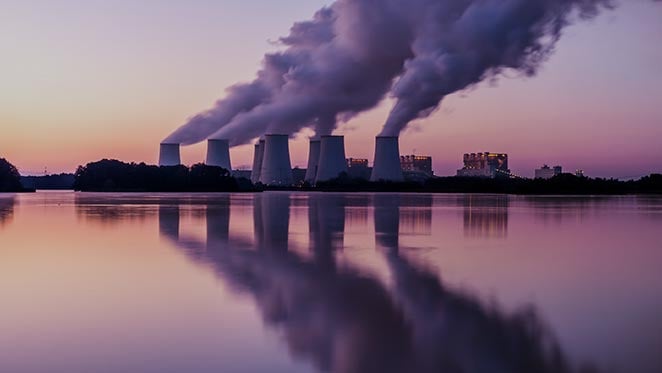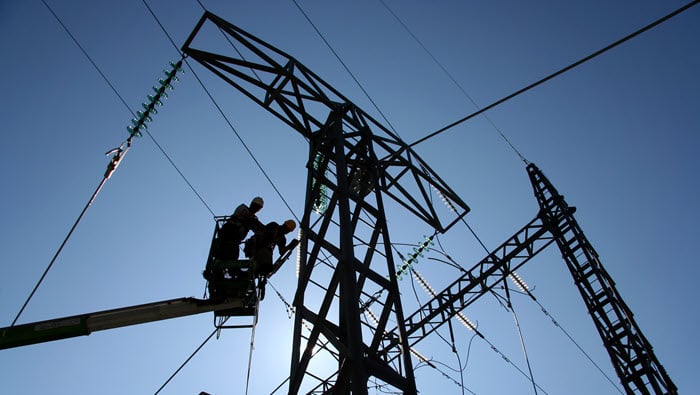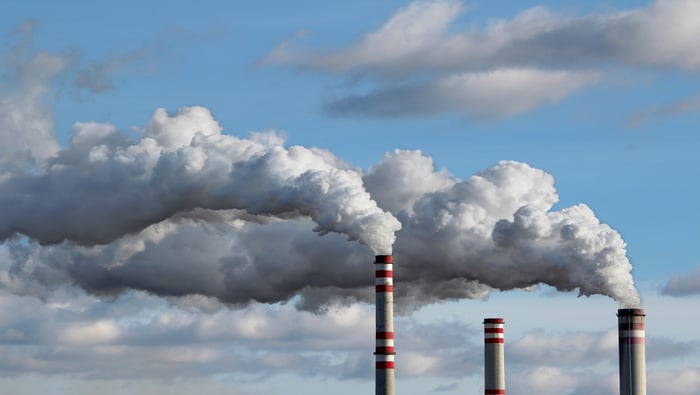Part two of our three-part Insight series covers the EU Green Deal Industrial Plan and supplementary acts
China, the USA and Europe are pursuing different strategies to establish their leads in future green markets. In mid-2022, the US government launched the Inflation Reduction Act (IRA). EU policymakers are concerned that the financial support to US-based green businesses offered by the IRA could make Europe relatively less attractive as a green-tech location, adding to pressure from Chinese competitors. With a Green Deal Industrial Plan, EU policymakers now want to level the playing field by promising faster permitting, better funding, skilled workers and resilient supply chains. While EU policymakers agree that something needs to be done, how to fund it will be controversial. EU subsidies to green businesses would be costly to European governments but could also lead to new green innovations and capacity building in green technology and production beyond what could be achieved by the IRA alone.
In Part one – The race to dominate future green markets – we looked in more general terms at the policy options available for countries to compete in the race to dominate future green-tech markets. In Part three, we will assess the likely impact of the policy developments on the green transition in general and on the commodity markets in particular.
Responding to the game changing Inflation Reduction Act: The EU Green Industrial Plan
The US Inflation Reduction Act: a game changer?
The US Inflation Reduction Act (IRA) opens a new chapter in US environmental policy.
The IRA provides $394 bn of climate and energy funding to households and businesses, much of it in the form of tax credits. Receiving $216 bn, businesses will be the main beneficiaries. $43 bn has been allocated to households to incentivise the purchase of electric vehicles (EVs), energy-efficient appliances, rooftop solar panels, geothermal heating and home batteries.
A major aspect of the IRA is that the full tax credits are only available if certain conditions are met that support the domestic economy. For example, the full tax credit for EVs is only available if the battery is made/assembled in North America and a certain percentage of critical minerals in the battery are recycled in North America or are extracted/processed in a country with which the USA has a free-trade agreement (FTA). The most important FTA for the USA is the United States-Mexico-Canada Agreement (USMCA), which replaced the North America Free Trade Agreement (NAFTA) in 2020. The North American auto industry has a highly integrated supply chain across these three countries.
The financial incentives aimed at supporting the US economy are substantial enough to influence corporate decision making on a global level and have the potential to shape the global green-tech industry and markets over coming decades.
The EU Green Deal Industrial Plan
Against this background, EU policymakers are concerned that European green-tech businesses could be enticed to relocate to the USA, which could make it more difficult to support a domestic supply chain required for the green transition. EU policymakers have tried to address their concerns in two ways.
First, they established a taskforce with their US counterparts in October 2022 to discuss how European businesses could also benefit from the financial incentives offered. In mid-March, the US President, Joe Biden, and President of the European Commission, Ursula von der Leyen, announced that they had agreed to cooperate more closely on critical minerals and EV batteries – addressing one of the main EU concerns. While no further detail was published, this probably means that US consumers can take advantage of the available tax credits even when buying EVs using batteries with critical minerals extracted or processed within the EU.
Second, EU policymakers have tried to raise their own game and strengthen European competitiveness in the green-tech sectors.
To this end, the European Commission (EC) published its draft Green Deal Industrial Plan on 1 February 2023. The plan comprises four pillars:
Pillar 1: A predictable and simplified regulatory framework based on a new Net-Zero Industry Act that would, among other things, help identify goals for European green-tech (n.b. the EC generally uses the term clean-tech rather than green-tech) by 2030, provide a regulatory framework that would ensure simplified and fast-track permitting and develop standards to support the scale-up of required technologies. The Net-Zero Industry Act will be complemented by the Critical Raw Materials Act.
Pillar 2: Faster access to funding aimed at boosting investment and financing of green-tech production in the EU. This would bring together public- and private-sector financing, the latter facilitated by further progress on the EU Capital Markets Union. As part of that, the EC aims to guarantee a level playing field among member states while making it easier for individual member states to grant aid to accelerate the green transition. Moreover, the EC proposes a European Sovereignty Fund to meet investment needs across the bloc.
Pillar 3: Enhancing skills to make the green transition possible and so that workers can benefit from well-paid employment opportunities arising as a result of the green transition. This would involve the establishment of Net-Zero Industry Academies.
Pillar 4: Open trade for resilient supply chains to ensure that international trade is open and based on the principles of fair competition. The EC will explore opportunities to establish a Critical Raw Materials Club that would bring together consumers and producers of critical raw materials to ensure a stable, diversified global supply chain.
The industrial plan identifies key challenges, but does it have the answers?
The draft green deal industrial plan is high level; it will take months of negotiations in the technical committees of the European Parliament and the Council of the EU (Council), representing the member states, to flesh out the detail. In the EU, it is for the EC to propose new legislation but for the European Parliament and the Council to legislate (n.b see our insight on the EU’s Fit for 55 package for more details).
For example, the EC proposes to reform the EU planning and permitting system, which is widely recognised as an obstacle to the rapid rollout of renewable energy sources and industrial development more widely. Harmonising and simplifying permitting systems across member states has proved an elusive undertaking in the past; it remains to be seen whether more progress can be made this time (n.b see our insight on the EU’s renewable energy targets for more details).
Any credible long-term industrial strategy also needs to consider the availability of skilled labour, the more so against the backdrop of a rapidly ageing population and severe labour shortages across many sectors. The EC draft therefore rightly focuses on skills. However, beyond proposing the establishment of Net-Zero Industry Academies, the draft is light on any details.
The fourth pillar focuses on open trade for resilient supply chains. The EU is currently in the process of finalising its Critical Raw Materials Act in an effort to diversify its global supply of critical raw materials required in European value chains.
Finally, the financing pillar aims to ensure that the EU will remain an attractive industrial location and can be seen as a direct response to the US Inflation Reduction Act.
Commission sets out its vision of a Net-Zero Industry Act
On 14 March, the EC published its proposed Net-Zero Industry Act, providing further details on Pillar 1 of the Green Industrial Plan. The proposal will also now have to be considered by the European Parliament and the Council. Among other things, the EC proposes:
- an aggregate target of at least 40% of green-tech to be used in the EU to be manufactured within the EU;
- specific industry targets, including that at least 40% annual solar PV deployment, 50% of electrolysers and 60% of heat pumps deployed in the EU will have to be manufactured within the bloc. For batteries and wind energy, the target should be 85% by 2030.
Strategically important sectors to benefit from faster permitting and easier access to funding but will this be enough?
To achieve these targets, the EC proposes a wide range of measures to support businesses, including accelerating permitting procedures and improving access to financing for strategically important sectors (Figure 1).
The EC proposes that businesses within these sectors could apply to have qualifying green-tech projects listed as ‘net zero resilience projects’, which would give them access to faster permitting processes. As stated above, slow permitting processes in many EU member states, sometimes stretching for years if not decades, have been identified as a major obstacle to the energy transition.
A secure and diversified supply of critical raw materials for strategically important sectors
On 14 March, the EC also published its proposal for the Critical Raw Materials Act (CRMA).The CRMA also plays a crucial role in the Green Deal Industrial Plan and aims to ensure a secure, diversified, affordable and sustainable supply of critical raw materials required by numerous strategically important sectors, including green-tech, digital, aerospace and defence.
The proposal updates the list of critical raw materials and identifies a list of strategic raw materials crucial to the EU’s green and digital ambitions.
It also sets benchmarks for domestic capacities along the strategic raw material supply chain and to diversify EU supply:
- At least 15% of EU annual consumption for recycling.
- At least 10% of EU annual consumption for extraction.
- At least 40% of EU annual consumption for processing.
- Not more than 65% of the EU annual consumption of each strategic raw material at any relevant stage of processing from a single third country.
EU Temporary Crisis and Transition Framework to provide financial support to green-tech sectors
European green-tech businesses are also eagerly awaiting a European financial response to the significant financial incentives made available by the US IRA.
The proposed Net-Zero Industry Act is light on any details in this respect but, on 9 March, the EC announced that it would adopt and extend the EU Temporary Crisis and Transition Framework to provide financial support for the transition to a net-zero economy. The framework was established in 2022 to allow EU member states to support their economies in the wake of the Russian invasion of Ukraine. It has now been adopted to support the implementation of the Green Deal Industrial Plan.
With respect to state aid and funding, the framework puts member states in the position to offer the [financial] support needed for the energy transition until end-2025, with a particular focus on the rollout of renewable energy and energy storage and schemes for the decarbonisation of industrial production processes.
More specifically, the framework encourages member states to design ‘simple and effective’ schemes aimed at accelerating investments in sectors relevant to the energy transition, including the manufacture of strategic equipment (e.g. batteries, solar panels, wind turbines, heat-pumps, electrolysers and carbon capture usage and storage) and production and recycling of related critical raw materials.
In broad terms, member states can provide financial support capped at a not yet specified percentage of total investment cost, depending on the location of the investment and the size of the business in question (n.b. the percentage can be higher in disadvantaged regions and for small and medium-sized enterprises). Even higher support can be offered if it is in the form of tax advantages, loans or guarantees. Notably, the framework also allows member states, in exceptional circumstances, to match the financial support offered in another country outside the EU to avert particular businesses from investing elsewhere (‘matching aid’).
The updated EU Temporary Crisis and Transition Framework represents a softening of EU state-aid rules. It does not address the issue of funding, with some member states having much more fiscal space to provide financial support than others.
A broad-based and ambitious policy initiative – but will it have the desired impact?
The announced initiatives and targets are wide ranging and ambitious, covering issues such as permitting, critical minerals, renewables content and financing. Are the stated targets realistic and will the funds made available suffice to create a level playing field with the USA?
In Part three, we will address the questions above and assess the likely impact of the policy developments on the green transition in general and on the commodity markets in particular.
To discuss any of the issues covered in this or any of our previous Insights please reach out to CRU Sustainability.
















